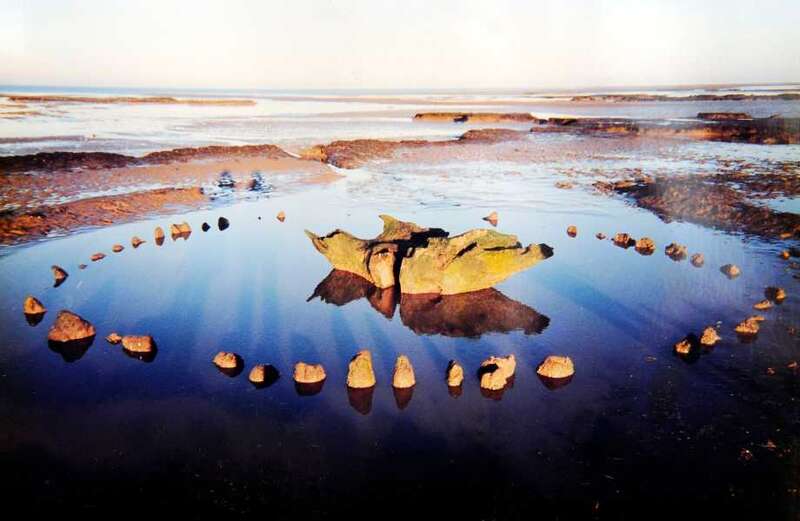A STRANGE, ancient structure by the sea that rivals the peculiarity of Stonehenge may have been built for a very British purpose.
Archaeologists have for years been scratching their heads over why a timber circle was constructed just off the coast of Norfolk 4,000 years ago.


Dubbed "Seahenge", it is now believed that ancient Britons pieced together the monument in a spiritual bid to bring warmer weather to the island.
University of Aberdeen researcher Dr David Nance has published new findings, posing an explanation that it was constructed during a period of prolonged cold weather.
He says the timber came from trees chopped down in spring, the structure was aligned with the sunrise and it was built at a time of "severe winters" .
 Spectacular New Year fireworks light up London sky as huge crowds celebrate across UK for first time in three years
Spectacular New Year fireworks light up London sky as huge crowds celebrate across UK for first time in three years
Dr Nance hypothesised that it represented a cage holding in an unfledged cuckoo to keep it singing - and therefore extend summer.
Dr Nance said in his GeoJournal paper: "Dating of the Seahenge timbers showed they were felled in the spring, and it was considered most probable that these timbers were aligned with sunrise on the summer solstice.
"We know that the period in which they were constructed 4,000 years ago was a prolonged period of decreased atmospheric temperatures and severe winters and late springs placing these early coastal societies under stress.
“It seems most likely that these monuments had the common intention to end this existential threat but they had different functions.”
The structure was first discovered after sands shifted at Holme-next-the-Sea beach in 1998 - and it's estimated to have been built in the spring of 2049 BC.
Dr Nance explained his thinking behind the cuckoo symbolism.
He said: "Summer solstice was the date when according to folklore the cuckoo, symbolising fertility, traditionally stopped singing, returned to the Otherworld and the summer went with it."
A similar monument in close proximity called "Holme II" was also examined by Dr Nance.
The pair mark the only known ancient British structures to have been put up together.
Previously, it was thought they marked the death of community members, or were used for bizarre burials where corpses were placed to be pecked at by flesh-feeding birds.
 Robbie Williams poised to launch his own brand of energy drinks to rival Prime
Robbie Williams poised to launch his own brand of energy drinks to rival Prime
Holme II, Dr Nance says, could've held coffins for unlucky Brits who were sacrificed every eight years to keep the gods happy.
But the intent was ultimately the same, Dr Nance says: "to end the severely cold weather".
Despite being dubbed "Seahenge", experts say they were built in a swampy area protected from the sea, with peat from decayed vegetation forming a layer over the structures to preserve them.




































